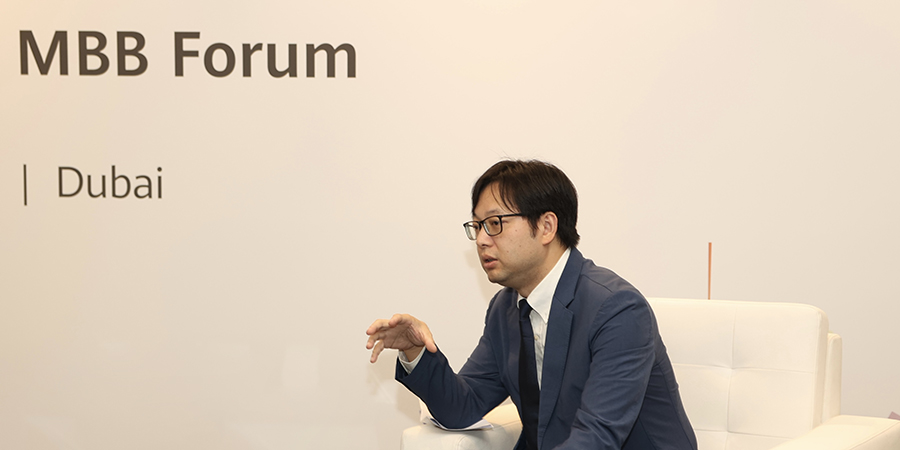In the ever-evolving world of telecommunications, the race towards 5G technology has become the central focus for industry leaders and innovators. At the heart of this transformation are the concepts of GigaGreen, that seek to revolutionize the way we experience 5G connectivity. Fang Xiang, Vice President of Huawei's Wireless Network Product Line, sat down for an exclusive interview with Telecom Review to discuss the company's groundbreaking all bands evolution to 5G and the next-gen GigaGreen series of solutions designed to build best 5G networks.
Huawei's GigaGreen Initiative in the 5G Evolution
Fang Xiang shed light on the driving force behind Huawei's GigaGreen initiative. He explained that this concept was born out of their deep collaboration with network operators during the transition from 4G to 5G. Huawei's approach involved analyzing their evolving requirements and needs. The result was GigaGreen, a concept that carries a dual connotation. "Giga" encompasses both "Gigaband" and "Giga experience". Gigaband focuses on helping operators address the fragmented spectral bands when transitioning from 4G to 5G, enabling united collaboration, scheduling and management, ensuring a seamless and efficient network. Giga experience, on the other hand, is all about optimizing the end-user experience and service coverage.
Xiang elaborated on the "Green" aspect of GigaGreen, emphasizing that energy consumption is a significant concern for network operators, often representing a substantial portion of their operational expenses. Operators anticipate a three to four-fold increase in traffic as they transition to 5G but aspire to maintain energy consumption at the same level. To meet this challenge, Huawei has developed innovative products that reduce energy consumption, emphasizing "0 bit, 0 watt" energy-efficient solutions.
GigaGreen is Huawei's answer to the evolving landscape of 5G, one that anticipates a multitude of diverse services and applications, including cloud gaming, cloud-based augmented reality (AR), glasses-free 3D, connected cars and an array of IoT devices. These innovations require networks with new capabilities, and GigaGreen technology is central to achieving these requirements. Huawei aims to maximize the value of every hertz of the spectrum, enabling operators to extend their network coverage, improve downlink and uplink capacity, reduce latency and create more energy-efficient 5G networks.
Enhancing Spectral Efficiency and Sustainability
When asked about the value that Huawei's GigaGreen brings to the industry, Fang Xiang highlighted two key aspects. First, the Ultra-wideband component focuses on aggregating the multitude of frequency bands used by operators to enhance spectral efficiency. Second, Giga experience is achieved by using all bands multi-antenna products and beamforming algorithms to significantly increase spectral efficiency and coverage.
Xiang also mentioned that Huawei's green philosophy goes beyond energy savings, as it also aims to help operators save space and reduce the need for supporting materials. The new generation of products has seen a 25% reduction in size and weight compared to current versions. This not only streamlines deployment for operators but also contributes to the broader goal of reducing carbon footprint.
Advancing 5G Performance and Efficiency
In response to the question about the technical advantages of Huawei's GigaGreen radio products, and how they benefit operators in terms of performance and energy savings, Fang Xiang provided a detailed overview of the technological breakthroughs achieved.
Huawei's GigaGreen radio products incorporate ultra-wideband and multi-antenna technology, but what truly sets them apart is the innovation in raw materials and architecture. The true ultra-wideband offer a range of models to support service-load-based RF power management similar to the 'Tidal' effect, enabling power sharing between bands, cells, users and time slots. This dynamic power allocation leads to a 30% improvement in user experience performance and a 30% reduction in energy consumption compared to the competitors.
Additionally, Huawei's FDD Massive MIMO offering, which integrates active and passive elements, stands out. This integration of RF and antenna creates a synergy that surpasses what individual components can achieve independently "1 + 1 > 2". The breakthroughs in antenna array, filter, and power amplifier materials which also enable massive components can be installed in a small box. With rich commercial practice in more than 100 global operators, massive scenarios and applications, Huawei develops the world-leading FDD beamforming technology. All these FDD Massive MIMO beamforming innovations result in at least 40% better performance than industry competitors.
Xiang emphasized the uniqueness of Huawei's GigaGreen radio products of tri-band 8T8R RRU and the tri-band FDD Massive MIMO just released on MBBF2023, these products offer a remarkable up to 10 times capacity, 7 to 10 dB more coverage compared to traditional 4T4R products.
In conclusion, Huawei's GigaGreen initiative represents a bold step forward in the evolution of 5G networks. These state-of-the-art innovations adhere to the integrated, collaborated, and flexible concepts, helping operators maximize the spectrum value of every hertz, adapting to more service scenarios and new applications, promising to create more sustainable and powerful 5G/5.5G networks, driving the industry towards an era of greater connectivity, reduced energy consumption and enhanced user experiences.










